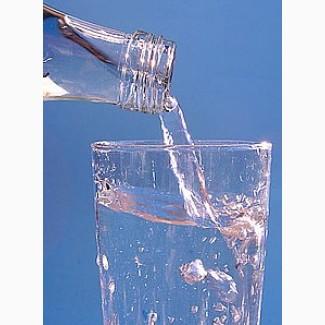/ Services for agriculture / Various services + in assortment / | ||64Продам от производителя минральную воду...
I will provide a service
I will sell mineral water from the manufacturer. With 20 tons, Volyn region.
Region:all of Ukraine,
Volyn region.
(Odessa region)
Updated:
I will sell mineral water from the manufacturer. For export. With 20 tons. It is possible to calculate delivery to any safe port in the world. 1 liter. 2 liters. Mineral carbonated and non-carbonated. Clean water in a tanker or tank. Tank 500 - 750 liters. The price is negotiable.
The application will be sent from the buyer in Russian or English with a signature and seal in the format to my e-mail spotap@ukr.net. My phone numbers are +380969351156 Viber and +380502711484 WhatsApp Aleksandr.
Biologically significant elements (as opposed to biologically inert elements) are chemical elements necessary for living organisms to ensure normal life activity.
The elements that support the vital activity of the organism are classified according to different characteristics - content in the body, degree of necessity, biological role, tissue specificity, etc. According to the content in the human body and other mammals, the elements are divided into
macro elements (hundredths of a percent and more);
microelements (from hundred thousandths to thousandths of a percent);
ultra microelements million parts percent and less.
Some authors draw the boundaries between these types by the second concentration values. Sometimes ultramicroelements are not separated from microelements.
Contents
1 Macro elements
1.1 Organogenic elements
1.2 Other macroelements
2 Microelements
2.1 Basic trace elements
3 Biogenic elements
4 Compatibility
5 Lack of mineral substances in the body
6 Use of the term "mineral" in relation to biologically significant elements
Macro elements
These elements form the basis of the flesh of living organisms.
Organogenic elements
The lion's share of cell mass is made up of 4 elements, their content in the human body is indicated.
Oxygen — 65%;
Carbon — 18%;
Hydrogen — 10%;
Nitrogen - 3%.
These macroelements are called organogenic elements or macronutrients (English macronutrient). Proteins, fats, carbohydrates, nucleic acids and many other organic substances are mainly made of them. Sometimes these four elements are denoted by the acronym CHNO, which consists of those indicated in Mendeleev's table.
Other macroelements
Other macroelements and their content in the human body are listed below.
Potassium - 0.35%
Calcium - 2%
Magnesium — 0.05%
Sodium - 0.15%
Sulfur - 0.25%(//tractor-service.com)
Phosphorus - 1.1%
Chlorine - 0.15%
Microelements
The term "microelements" was particularly widespread in medical, biological and agricultural scientific literature in the middle of the 20th century. In particular, it became obvious to agronomists that even a sufficient amount of "macroelements" infertilizers (the NPK trinity — nitrogen, phosphorus, potassium) does not ensure normal plant development.
The content of trace elements in the body is small, but they participate in biochemical processes and are necessary for living organisms. Maintaining their content in tissues at the physiological level is necessary to maintain the constancy of the internal environment (homeostasis) of the body.
Basic trace elements
More than 30 trace elements are considered necessary for the vital activity of plants, animals and humans. Among them (in alphabetical order):
Bromine (Br)
Boron (B)
Cobalt (Co)
Silicon (Si)
Manganese (Mn)
Copper (Cu)
Molybdenum (Mo)
Nickel (Ni)
Selenium (Se)
Fluorine (F)
Chromium (Cr)
Zinc (Zn)
The lower the concentration of an element in the body, the more difficult it is to establish its biological role, to identify compounds in the formation of which it takes part. Undoubtedly important ones include boron, vanadium, silicon, etc.
Biogenic elements
All elements that are constantly present in living organisms and play any biological role are called biogenic, primarily O, C, H, Ca, N, K, P, Mg, S, Cl, Na, Fe[12].|| |194
Совместимость
The main article: Interactions of micronutrients.
Antagonism (negative interaction) or synergism (positive interaction) between different components is possible when the body absorbs vitamins, microelements, and macroelements.
Lack of mineral substances in the body.
The main reasons causing a lack of mineral substances:
Improper or monotonous nutrition, low-quality drinking water.
The geological features of various regions of the Earth are endemic and unfavorable.
Big loss of mineral substances due to bleeding, Crohn's disease, ulcerative colitis.
The use of alcohol and some drugs that bind or cause the loss of trace elements.
Use of the term "mineral" in relation to biologically significant elements.
Micro- and macroelements enter the body mainly from food. To denote them, there is a term dietary mineral in English.
At the end of the 20th century, Russian manufacturers of some medicinal preparations and biologically active supplements began to use the term "mineral" to denote macro- and microelements. From a scientific point of view, such use of this term is incorrect, as it means only a geological natural body with a crystalline structure. However, manufacturers of the so-called "biological supplements" began to call their products vitamin-mineral complexes, meaning mineraladditives to vitamins.
The application will be sent from the buyer in Russian or English with a signature and seal in the format to my e-mail spotap@ukr.net. My phone numbers are +380969351156 Viber and +380502711484 WhatsApp Aleksandr.
Biologically significant elements (as opposed to biologically inert elements) are chemical elements necessary for living organisms to ensure normal life activity.
The elements that support the vital activity of the organism are classified according to different characteristics - content in the body, degree of necessity, biological role, tissue specificity, etc. According to the content in the human body and other mammals, the elements are divided into
macro elements (hundredths of a percent and more);
microelements (from hundred thousandths to thousandths of a percent);
ultra microelements million parts percent and less.
Some authors draw the boundaries between these types by the second concentration values. Sometimes ultramicroelements are not separated from microelements.
Contents
1 Macro elements
1.1 Organogenic elements
1.2 Other macroelements
2 Microelements
2.1 Basic trace elements
3 Biogenic elements
4 Compatibility
5 Lack of mineral substances in the body
6 Use of the term "mineral" in relation to biologically significant elements
Macro elements
These elements form the basis of the flesh of living organisms.
Organogenic elements
The lion's share of cell mass is made up of 4 elements, their content in the human body is indicated.
Oxygen — 65%;
Carbon — 18%;
Hydrogen — 10%;
Nitrogen - 3%.
These macroelements are called organogenic elements or macronutrients (English macronutrient). Proteins, fats, carbohydrates, nucleic acids and many other organic substances are mainly made of them. Sometimes these four elements are denoted by the acronym CHNO, which consists of those indicated in Mendeleev's table.
Other macroelements
Other macroelements and their content in the human body are listed below.
Potassium - 0.35%
Calcium - 2%
Magnesium — 0.05%
Sodium - 0.15%
Sulfur - 0.25%(//tractor-service.com)
Phosphorus - 1.1%
Chlorine - 0.15%
Microelements
The term "microelements" was particularly widespread in medical, biological and agricultural scientific literature in the middle of the 20th century. In particular, it became obvious to agronomists that even a sufficient amount of "macroelements" infertilizers (the NPK trinity — nitrogen, phosphorus, potassium) does not ensure normal plant development.
The content of trace elements in the body is small, but they participate in biochemical processes and are necessary for living organisms. Maintaining their content in tissues at the physiological level is necessary to maintain the constancy of the internal environment (homeostasis) of the body.
Basic trace elements
More than 30 trace elements are considered necessary for the vital activity of plants, animals and humans. Among them (in alphabetical order):
Bromine (Br)
Boron (B)
Cobalt (Co)
Silicon (Si)
Manganese (Mn)
Copper (Cu)
Molybdenum (Mo)
Nickel (Ni)
Selenium (Se)
Fluorine (F)
Chromium (Cr)
Zinc (Zn)
The lower the concentration of an element in the body, the more difficult it is to establish its biological role, to identify compounds in the formation of which it takes part. Undoubtedly important ones include boron, vanadium, silicon, etc.
Biogenic elements
All elements that are constantly present in living organisms and play any biological role are called biogenic, primarily O, C, H, Ca, N, K, P, Mg, S, Cl, Na, Fe[12].|| |194
Совместимость
The main article: Interactions of micronutrients.
Antagonism (negative interaction) or synergism (positive interaction) between different components is possible when the body absorbs vitamins, microelements, and macroelements.
Lack of mineral substances in the body.
The main reasons causing a lack of mineral substances:
Improper or monotonous nutrition, low-quality drinking water.
The geological features of various regions of the Earth are endemic and unfavorable.
Big loss of mineral substances due to bleeding, Crohn's disease, ulcerative colitis.
The use of alcohol and some drugs that bind or cause the loss of trace elements.
Use of the term "mineral" in relation to biologically significant elements.
Micro- and macroelements enter the body mainly from food. To denote them, there is a term dietary mineral in English.
At the end of the 20th century, Russian manufacturers of some medicinal preparations and biologically active supplements began to use the term "mineral" to denote macro- and microelements. From a scientific point of view, such use of this term is incorrect, as it means only a geological natural body with a crystalline structure. However, manufacturers of the so-called "biological supplements" began to call their products vitamin-mineral complexes, meaning mineraladditives to vitamins.
|
Shop , contacts | |
Alexander / reviews, info.: 23 / activity evaluation|| |223 Увага! У користувача багато negative reviews | |
|
Phone:
+380xxxxxx
show
| |
| Skype: potapsan | |
All user ads ~265 | |
Ad ID: #809990
(added by a registered user, registration date: 08-14-2012)
Added / Updated: 09-01-2024 08:50 (current, until: 01-09-2025)
Permanent Ad Address:
Impressions / views for today: ?, total: ?
Similar ads
There are many interesting...







